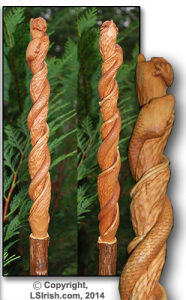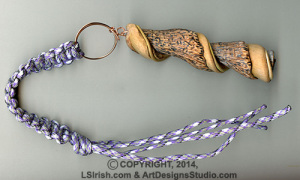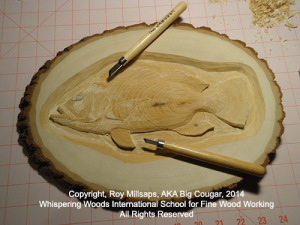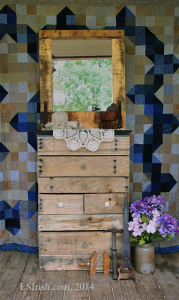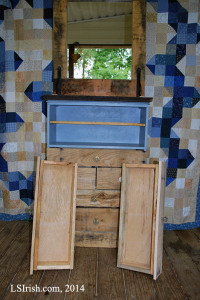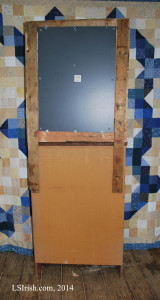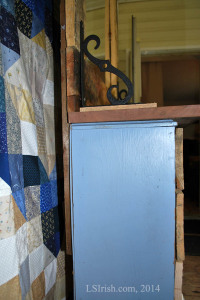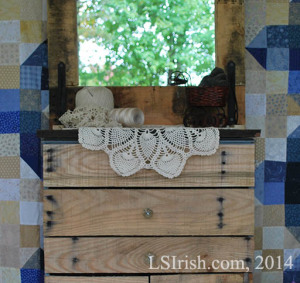Twistie Stick Snake Carving Free Project
I thought I would share a walking stick carving.
Day 1 Twistie Stick Snake Cane Carving
Day 2 Twistie Stick Snake Cane Carving
Day 3 Twistie Stick Snake Cane Carving
Day 4 Twistie Stick Snake Cane Carving
Day 5 Twistie Stick Snake Cane Carving
Walking Stick Joinery
Walking Stick Wood Species – Harvesting Your Sticks
Walking Stick – Adding Extras
Walking Stick – How to Clamp Your Handle
Free Mountain Man Cane Carving Pattern
Walking stick carving is often one of the first carving projects a new woodcarver tries. This particular design – a snake wrapped around a Sassafras twistie stick – is a beginner’s level project, but I think that even the advanced carvers here may discover a few fun tricks and tips.
We will work, step by step, through creating the round, establishing the snake, marking and cutting the twist, texture the snake and bark, adding a frog on the top of the stick, and how to add a real honeysuckle vine into the twist. The cane will be lightly coated with a finished with a linseed oil and turpentine mixture and then dry mounted to your walking staff.
Supplies:
These are the tools that I used, but you do not need these exact tools or exact sizes. Use what you have. If you are new, a bench knife, or large chip carving knife, and a basic Japanese set will get you started. Because we will be creating the pattern directly to the basswood you can make this stick in any length!
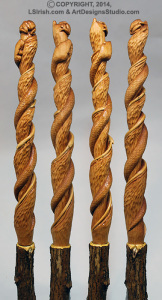 1 1/2″ x 1 1/2″ x 12″ basswood blank
1 1/2″ x 1 1/2″ x 12″ basswood blank
bench knife or large chip carving knife
v-gouge
3/8″ round gouge
1/8″ round gouge
u-gouge, also called a veining tool
several sizes of fine rasps or rifflers
220-grit sandpaper
1″ wide painter’s tape or masking tape
pencil, for marking the cane
old toothbrush for cleaning
carving gloves
thick terry-cloth towel
sharpening tools
cardboard center from a roll of toilet paper
linseed oil
turpentine
all thread pipe
epoxy glue
walking stick staff – approx. 4′ to 5′ tall, x 1 1/4″ diameter
We will begin tomorrow by rounding-over the basswood stick, establishing the path of the snake, and rough carving the Sassafras twistie area low to reveal the snake’s body.So, go get your knives and carving tools, check them for sharpness, find a basswood cane blank, and join me tomorrow as we begin this fun project. I’m off to start cropping photos for you.
I will also be posting this Twistie Stick Snake Cane each day on my favorite carving forums. Stop by, join up, so that you can post your questions and photos!!!! Carving forums are like potato chips … just one is never enough … Grin!
FamilyWoodworking.org at Twistie Stick Snake Cane Thread
WoodworkingChat.com at Twistie Stick Snake Cane Thread
And while you wait to get started, visit Roy’s relief Carving Class thread – See our widgets in the right hand nav bar and on both forums!!!!
![]()
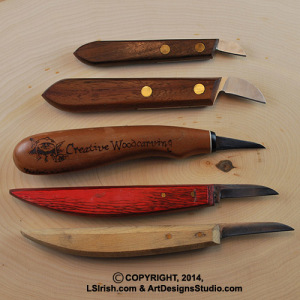 I had a question from one of the forums, and thought I would post the answer here too!
I had a question from one of the forums, and thought I would post the answer here too!
In the photo you can see five different bench knife styles – top to bottom – small chip carving knife, large chip carving knife, detailer, short-blade bench knife, and a long-blade bench knife.
I prefer a large chip carving knife as my main cutting knife whether for relief or for 3-d cane carving. My hand is small, much smaller than my husbands. Where the longer handles of the bench knives fit his hand, they are too cumbersome for me. Also, the short blade of the chip knife puts me hand right against the wood during the cut, a bench knife leaves my hand 1″ to 1 1/2″ away from the wood. The third advantage is that the chip knife serves two purposes – one for my regular carving and, of course, for chip carving.
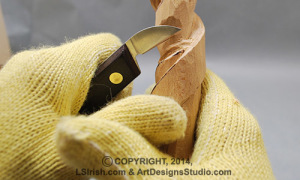 If you haven’t gotten a bench knife yet, consider a large chip carving knife. While you are making your purchases also get some of the new self-adhering bandage wraps. You can cut a short – 5″ length – and wrap the handle of your knife to give added grip strength. Cut a longer piece – 12″ – and wrap your tool handles if you have arthritis. It will make the handles thicker for easier gripping as well as pad the handle to minimize the stress on your joints.
If you haven’t gotten a bench knife yet, consider a large chip carving knife. While you are making your purchases also get some of the new self-adhering bandage wraps. You can cut a short – 5″ length – and wrap the handle of your knife to give added grip strength. Cut a longer piece – 12″ – and wrap your tool handles if you have arthritis. It will make the handles thicker for easier gripping as well as pad the handle to minimize the stress on your joints.
